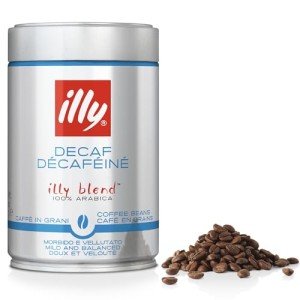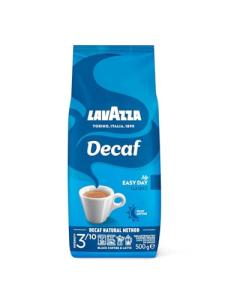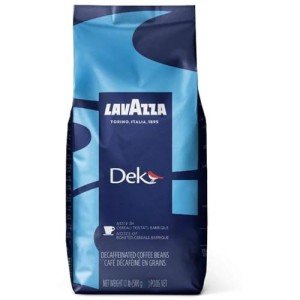Understanding Decaf Coffee Beans: A Comprehensive Guide to Whole Bean Blends
Coffee lovers often face a common dilemma: enjoying the rich flavors and aromas of coffee while wanting to avoid the caffeine jitters. This need has led to the increasing popularity of decaffeinated coffee, particularly in whole bean form. Among the various offerings in the market, 1-kilogram bags of decaf coffee bean blends are gaining traction for their convenience, flavor diversity, and freshness. This guide delves into what makes decaf coffee beans unique, how to choose the right blend, and answers some frequently asked questions.
What are Decaf Coffee Beans?
Decaffeinated coffee beans are sourced from the same coffee plants as their caffeinated counterparts. The primary difference lies in the caffeine extraction process, which typically involves one of three methods:
-
Chemical Solvent Process: This involves using a solvent such as methylene chloride or ethyl acetate to extract caffeine from the beans.
-
Water Process: Also known as the Swiss Water Method, this caffeine removal process uses water and is considered more natural, employing osmosis to remove caffeine without compromising flavor.
-
Carbon Dioxide Method: In this high-tech method, pressurized carbon dioxide is utilized to extract caffeine while preserving the essential oils and flavors of the coffee.
Decaf coffee beans are then roasted just like regular coffee beans, offering the potential for rich and varied flavor profiles that many coffee enthusiasts adore, without the stimulating effects of caffeine.
The Benefits of Whole Bean Decaf Coffee
When it comes to coffee, fresh is always best. Whole beans retain their flavor and aroma much better than pre-ground coffee. The benefits of selecting whole bean decaf coffee in 1-kilogram bags include:
-
Freshness: Whole beans offer a fresher taste because the volatile compounds responsible for coffee's flavor and aroma are preserved until the beans are ground.
-
Customization: Whole beans allow consumers to grind their coffee to their preferred coarseness, promoting a tailored brew that fits various methods such as French press, espresso, or drip coffee.
-
Sustainability: Buying in bulk helps reduce packaging waste and can often result in cost savings for consumers in the long run.
-
Flavor Variety: Many blends combine beans from different origins, leading to unique tastes and aromas that can provide a gourmet coffee experience.
Choosing the Right Decaf Coffee Blend
When purchasing a whole bean decaf coffee blend, it is essential to consider the following factors to ensure a satisfying coffee experience:
-
Origin: Coffee flavor is significantly influenced by its growing region. For example, beans from Guatemala often have nutty and chocolatey notes, while Colombian beans may provide a more acidic and fruity profile.
-
Roast Level: The roast level can greatly affect taste:
- Light Roast: Retains more of the bean’s original flavor and acidity.
- Medium Roast: A balanced flavor that incorporates both the bean's characteristics and roasting qualities.
- Dark Roast: Offers a bold, rich taste with a lower acidity; however, some subtle notes may be lost.
-
Blend Composition: Some blends combine multiple origins to create a more complex flavor profile. Experimenting with different blends can lead to unique tastes.
-
Artisan vs. Mass-Produced: Artisan roasters often produce small batches that focus on quality, sustainability, and unique flavor profiles, while mass-produced brands might prioritize yield and consistency.
-
Decaffeination Process: Understanding the method used can influence your flavor experience. Many consumers prefer the Swiss Water Method for its natural qualities.
Brewing Your Decaf Coffee
The beauty of whole bean coffee lies in the brewing process. Here are some popular methods to explore once you've selected your favorite decaf blend:
-
French Press: Coarse grounds yield a rich, full-bodied cup; steep for 4 minutes for optimal extraction.
-
Pour-Over: This method allows for precise control over brewing time and water temperature, resulting in a clean cup. Use medium-fine grounds for best results.
-
Espresso: Fine grounds help extract the concentrated flavors, but it requires a machine specifically designed for this brewing style.
-
Cold Brew: Using coarsely ground coffee combined with cold water for 12-24 hours creates a smooth and less acidic beverage.
FAQs About Decaf Coffee Beans
1. Is decaf coffee completely caffeine-free?
No, decaf coffee is not entirely free of caffeine. On average, an 8-ounce cup may contain 2-5 mg of caffeine, compared to around 95 mg found in regular coffee.
2. Can decaf coffee affect sleep?
For most people, decaf coffee is a suitable option for evening consumption due to its low caffeine content. However, individual sensitivity can vary.
3. Will decaf coffee provide the same health benefits as regular coffee?
Research indicates that decaf coffee contains many of the same antioxidants and beneficial compounds found in regular coffee, contributing positively to health.
4. How should I store whole bean decaf coffee?
To preserve freshness, whole beans should be stored in a cool, dark place in an airtight container, away from moisture, heat, and direct sunlight.
5. How long does whole bean decaf coffee last?
Properly stored whole bean decaf coffee can remain fresh for up to a month after opening. For longer preservation, consider freezing in small batches.
Decaf coffee beans in a whole bean blend offer a unique and tantalizing way for coffee drinkers to enjoy their favorite brew without the caffeine. With numerous options available, understanding the nuances of origin, blend composition, roast level, and brewing techniques can help consumers make informed choices that suit their taste preferences. Whether one seeks the comforting taste of decaf in the early evening or the joy of exploring new flavors, there is something undeniably rewarding about discovering a perfect cup of decaf coffee.






